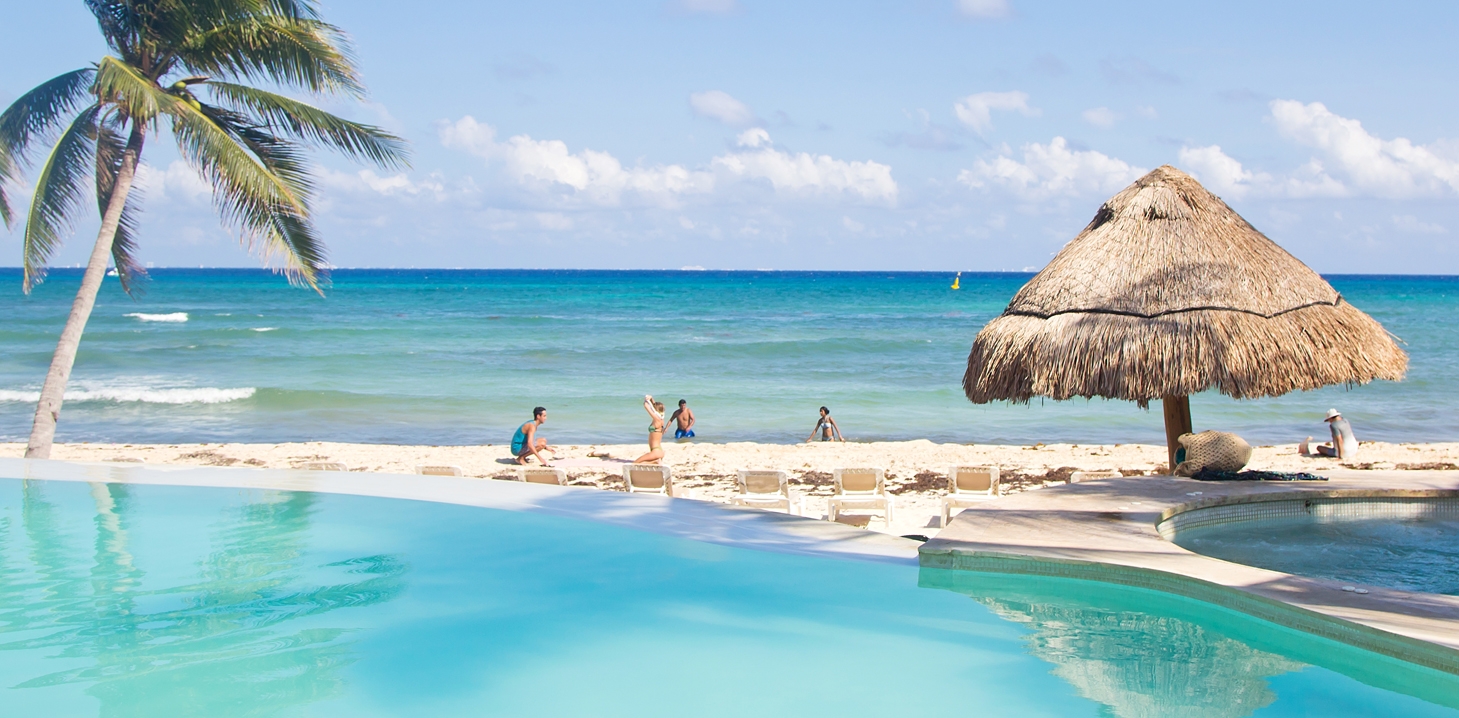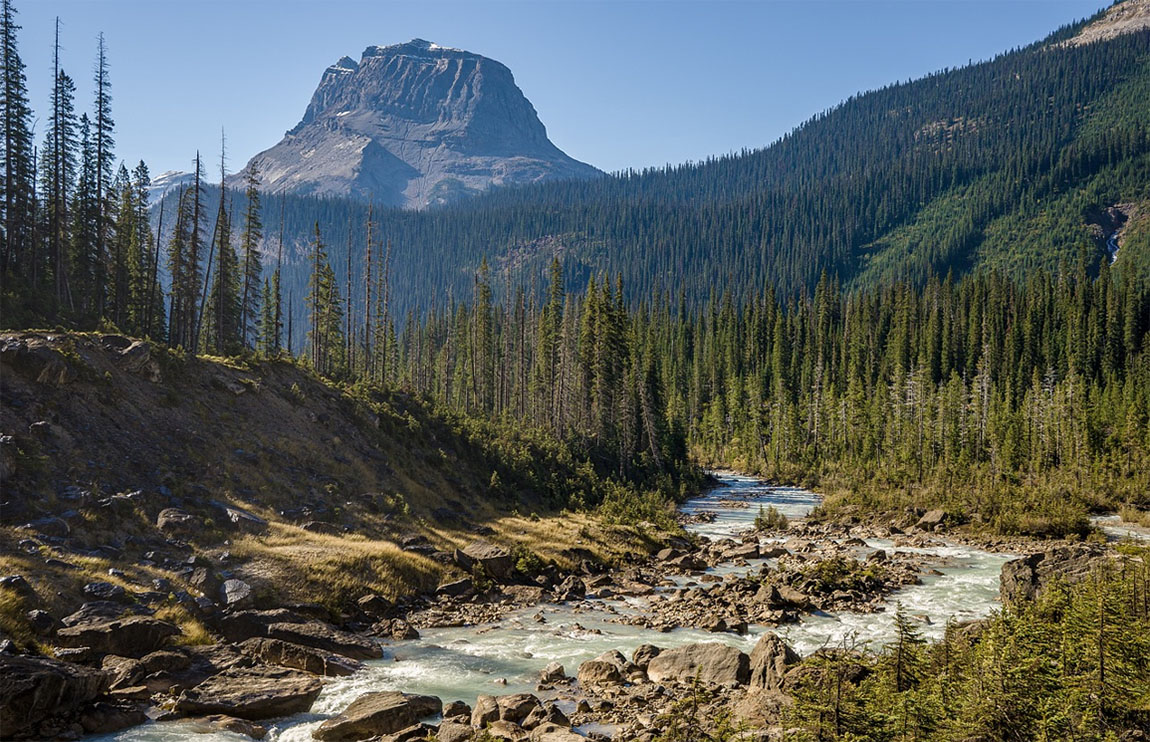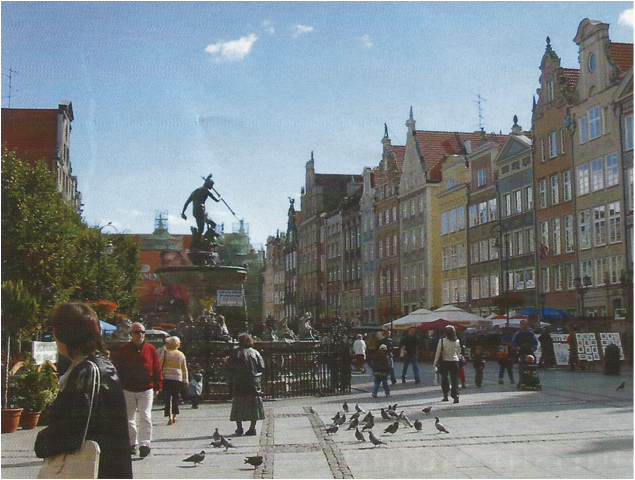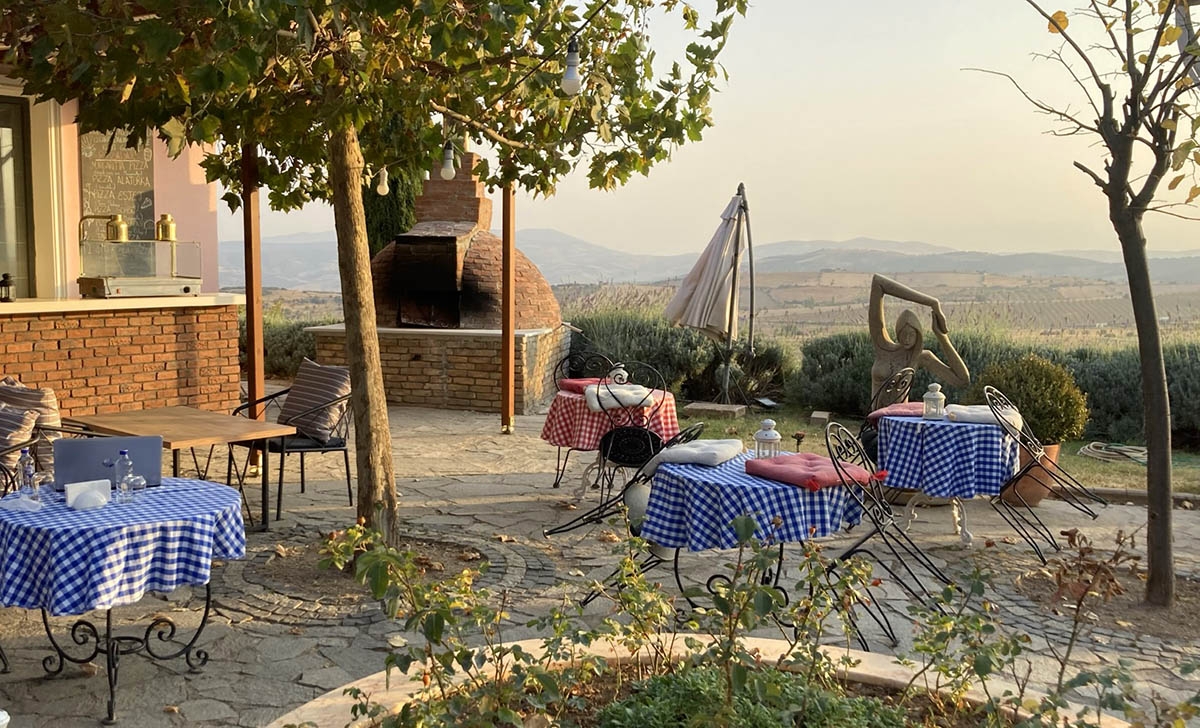
The best-kept secret in the Mediterranean: Turkiye’s wine region
Above: Yanikülke winery has a luxury resort vibe. It is one of the most picturesque wineries and resorts in the Aegean region.
Mediterranean civilization was built with wine as a cornerstone. Greece, France, Spain, and Italy are known internationally as some of the finest producers of history’s most significant fermented grape drink. The Greek and Roman societies venerated wine through the gods Bacchus and Dionysos, while wine is an integral part of the Christian and Jewish faiths, passed down from the pagan religions of ancient times. Millions of people travel every year to experience the culture and wine of Italy and Greece, but they are missing out on the little-known yet exciting wine regions of Turkiye.
Although a predominantly Muslim country, Turkiye is no stranger to tasty drinks. Turkish beer is sold all over Europe and is arguably as good, if not better, than some of its contemporaries. Turkish Raki is a spirit famous throughout the world for its potency and flavour, and ten years from now, Turkish wine will likely claim its rightful spot among top-tier wine producers.
For now, the industry is growing and building a reputation among Turks, showing citizens of the Mediterranean country that top-quality wine is available domestically while also attracting tourists. Ottawa Life recently had the privilege of travelling to Turkiye to discover this emerging wine superpower and take in some of the sites and history of this enchanting region.
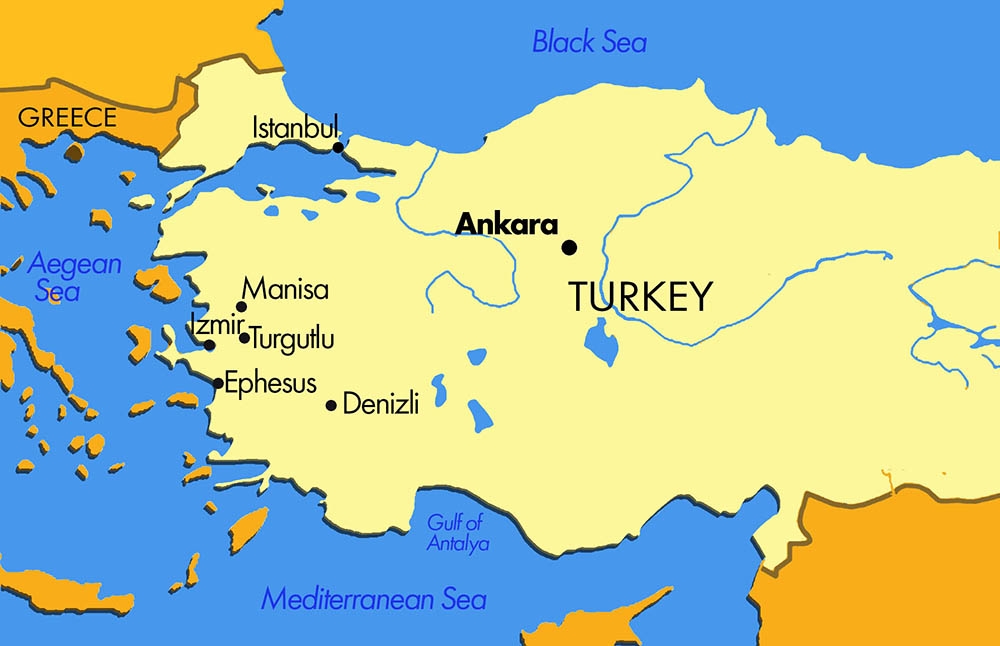
To get to Turkiye’s wine region, your most direct option is to start in the majestic city of Izmir. The most efficient way to get there is by flying Turkish Airlines. To ensure that you get to Turkiye well-rested and in comfort, business class is the way to go. Each seat in this luxury experience includes noise-cancelling headphones, a charging port and storage locker, slippers, and a large entertainment screen. You will also receive 1GB of data for use on the flight, more than enough for sending some work emails and scrolling Facebook for the nine-hour trip. The food on the flight is incredible. After the appetizer cart passed by with some Turkish aperitifs, the chef took orders for the main course. The menu included fish and lamb chops. Finish your meal with a nice scotch or a glass of wine, and recline your seat all the way back until it transforms into a cozy sleeping pod. You’ll arrive in Istanbul well-rested and ready for the hour-long connecting flight to Izmir and Turkiye’s wine region.
If you want to see the historical sites and wineries in the region, don’t linger in Turkiye’s third-largest city and ancient port city on the Aegean Sea. Instead, plan a few extra days at the end of your trip to explore the rich history of Izmir. It takes a full day alone to explore the bazaars in the old city!
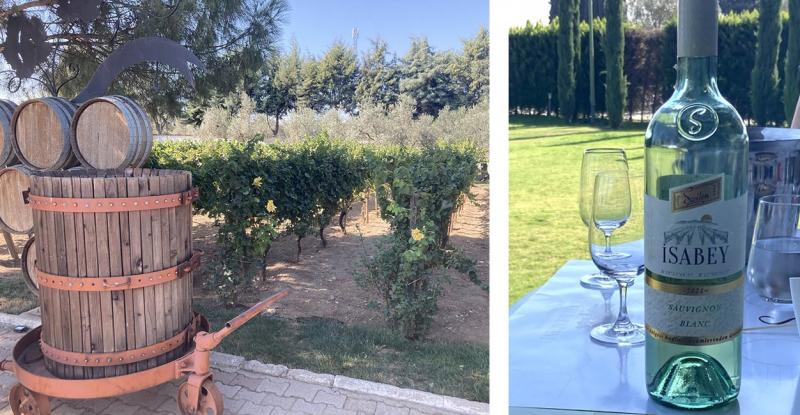
ABOVE: Isabey Vineyards may not have a sea view, but their restaurant is heralded as one of the best in the coastal region of Izmir. The winery’s Sauvignon Blanc is top-shelf.
Start your wine tour by visiting Isabey Vineyards & Winehouse. It is one of the country’s top three wine producers, producing over two million liters annually. In operation for 12 generations, the vineyards are older than Turkiye itself. Their Sauvignon Blanc wine has won international acclaim and is notable for its citrus notes and dryness. The beauty of this winery is almost impossible to overstate. It feels as though you are in the countryside of Sicily or rural Greece. If you’d like to sample the wines, stop for lunch or dinner at their fantastic restaurant that offers delicious French cuisine or book a wine tasting.
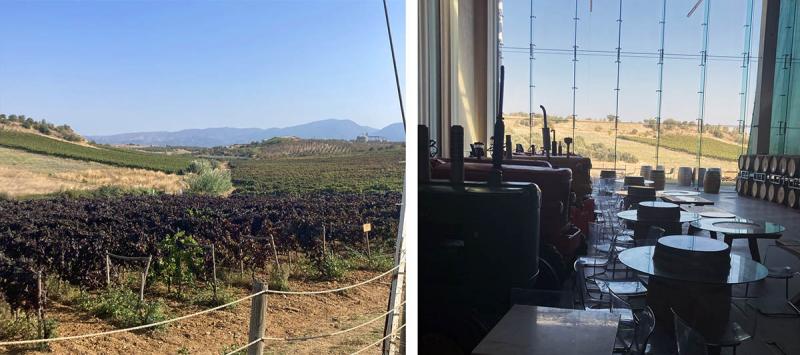
ABOVE: The vineyards at Nif. (RIGHT) The banquet area inside Nif’s winery hosts a collection of vintage tractors and offers beautiful views.
Inland from the coast, near Turgutlu, is another great spot to taste wine and enjoy dinner. Nif Vineyards & Winery is a relatively new wine producer, but the management knows its grapes, producing both table and wine grapes for Turkiye’s state-run wine industry. The 440-acre vineyard grows 23 varieties and interestingly uses German varieties of grapes. This is because the inland and mountainous climate is similar to that of central Europe, meaning the grapes can flourish.
Nif has a magnificent restaurant on site with a scenic view overlooking the rolling hills that are filled with olive trees and vineyards as far as the eye can see. Their Montepulciano Shiraz was an excellent accompaniment to the delicious steak dinner with oaky notes and a strong but flavourful finish. Nif also makes wonderful rose blends that will convert even the most skeptical red wine enthusiast.
After a day of exploring, we stayed in the close-by city of Manisa. DoubleTree by Hilton Manisa is a grand hotel centrally located near the town’s shopping and grand mosque. Manisa is a peaceful city of nearly one and a half million people, called the City of Princes, because candidates for the Sultanate of the Ottoman Empire were sent there for training. Manisa is also an influential town for Christian history, with three of the seven churches of the Book of Revelation located in the city.
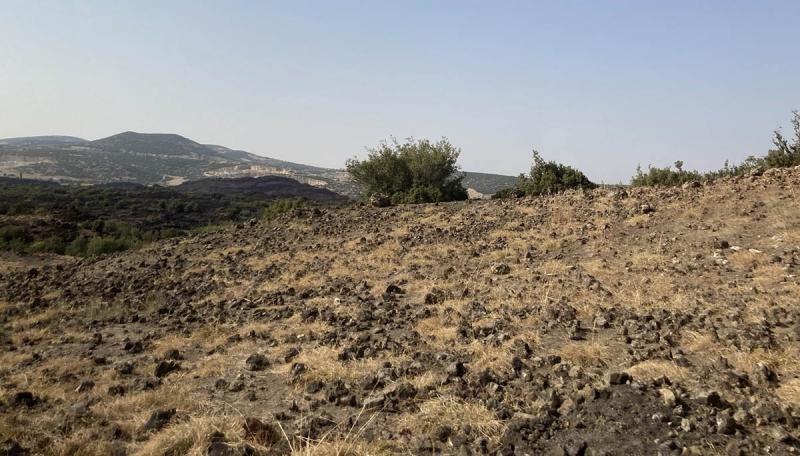
ABOVE: Ancient volcanic rocks entirely cover the area of the Manisa Kula Geopark, making it seem as though you are on Mars.
One of the things that make Turkish wine so fragrant and flavourful is the rich soil. While no longer active, Turkiye’s Mediterranean region likely had constant eruptions between one million and ten thousand years ago. To get a sense of the terroir, or soil behind the wines from this region, we went for a hike at Kula Volcanic Geopark. The bright red rock at its entrance looks like it belongs on Mars. The approximately two-kilometre hike through the park is surreal. The piles of thick blackish-red rocks restrict what vegetation can grow. When walking through the winding hills, the terrain of this once-active volcano looks almost alien yet simultaneously intriguing.

ABOVE: Yanikülke produces a wide variety of flavourful wines.
Nearby is also one of the most picturesque wineries and resorts in the Aegean region. The Yanikülke winery has been operating since 2008 and cultivates sixteen varieties, including Sicilian grapes and two Turkish grape varieties for their blends. Producing 26 delicious wines that range from savoury reds to oaky dry whites, you may like the wines so much that you’ll want to stay a day or two to try them all, and luckily you can. The luxurious resort in Yankülke has beautiful rooms and an outdoor pool directly in front of the villa. There is also a restaurant and wine bar on site.
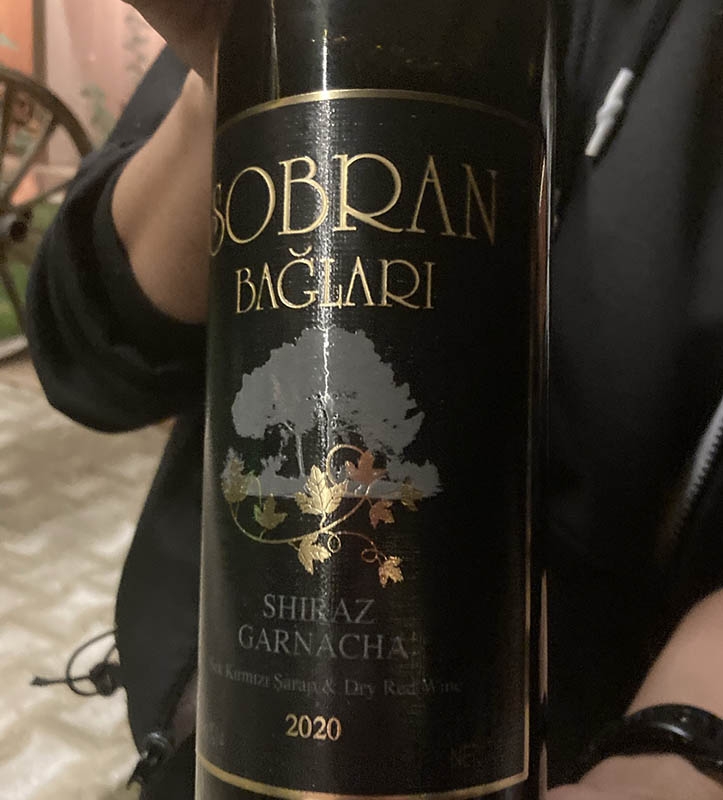
Enjoy a delicious Italian-style pizza and wine at Sobran Vineyards. This craft winery produces only for the domestic market, which is a shame as their wine is excellent with a distinct smokiness, aided no doubt by the volcanic terroir. The outdoor dining space, nestled next to the vineyard, is so chic it looks like it’s part of the set from a James Bond movie. Originally launched as a table-wine grape farm, the owners realized they could use these same grapes to produce quality wines. They were right, and it’s a pleasant place to relax for a couple of hours while enjoying a tasty meal with even better wine.
Our Aegean wine route experience stopped for the night in the city of Denizli. The Park Dedeman Hotel is near the heart of this city of 700,000, yet it offers a quiet night’s rest. One of the best restaurants on our trip was Garson Sukru, located near downtown. It’s easy to see why it is popular with both locals and foreigners.
Try Turkish Raki or a tasty local Efes beer with a delicious appetizers of roasted peppers served with hummus and regional delicacies, including a cold chickpea loaf and delightful salad. From Urfa-style Kofta to eggplant and meat kebabs, Garson hits it out of the park with roasted meats. Make sure to save room for dessert. The fruit plate includes a candied pumpkin that is so sweet and flavourful it makes jack-o-lanterns seem like wasted potential. The fruit plate comes with a honeycomb that is so sweet and savoury that it melts in your mouth; topped with pistachios and walnuts, it makes all other desserts seem insignificant and overcomplicated.
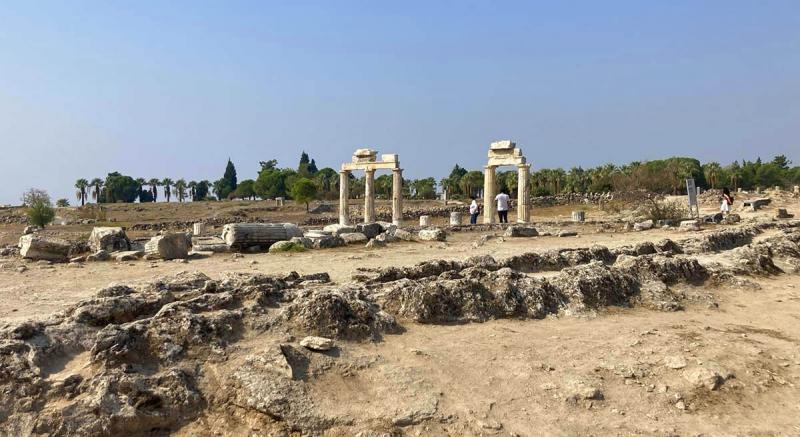
ABOVE: Pamukkale, one of Turkiye’s biggest tourist attractions.
Close to Denizli is one of Turkiye’s most famous landmarks, the ruins of Pamukkale. The name Pamukkale means “cotton castle.” The site jumps out at you from the plain surroundings of modest-sized homes and cotton fields. From a distance, the white cliffs are so white that the limestone hills look like they are made of sugar. Entering Pamukkale, you can’t miss the Byzantine gate that guards the ruins of the Roman and Greek civilizations that previously inhabited the city known as Hierapolis.
Among the ruins, you will find a magnificent Roman theatre that is well worth the hike to get to. From there, you will get a bird’s eye view of the area. Although the Roman bath halls at Hierapolis are but ruins, there is still a bathing area called “Cleopatra’s pool,” which uses water from the nearby springs. Purported to have healing properties, one of the trip’s most memorable moments was standing in one of the dozens of natural pools formed by the erosion of limestone from the flowing springs. The water is so clear and contrasts beautifully with the cliffs of Pamukkale that it appears you are standing on mirrored glass.
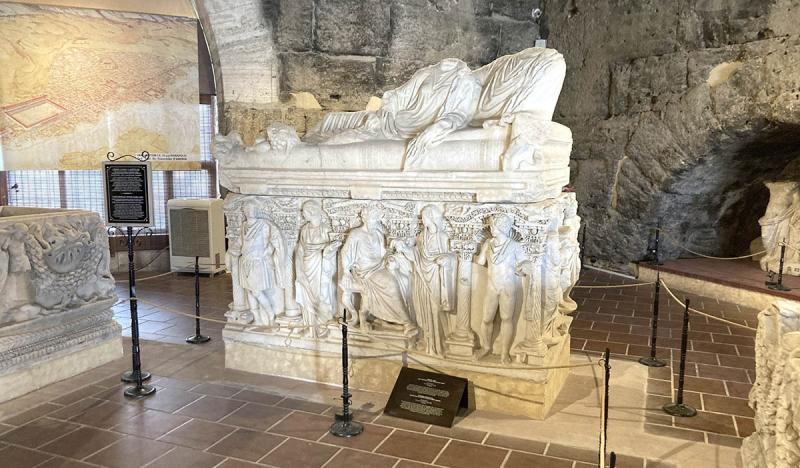
ABOVE: The Hierapolis Museum at Pamukkale showcases historical artefacts from the Roman and Greek eras. Admission is free with entrance to Pamukkale.
The on-site museum contains dozens of well-preserved Roman and Greek statues and sarcophagi from the height of Rome’s power. Also of importance to the Romans was the site of Plato’s gate. Because of the underground thermal activity from the springs, caverns with poisonous gases were found. Roman religious cult leaders used them to show their immunity to deadly air (although they held their breath or looked for air pockets). While at the same time using the site for animal sacrifice. For Christians, the site also has some significance; it is believed that Saint Philip of the Twelve Disciples was likely beheaded near the historic city.
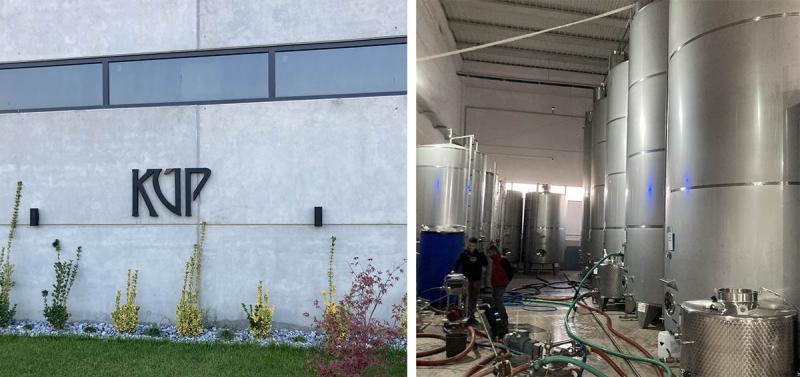
ABOVE: Kup white wines will please any California white wine lover. The good news is that they will soon be available at the SAQ.
After some relaxation at Pamukkale, stop by the Kup winery store. Kup’s wines are aged in American, French, and Hungarian oak and have a great oakiness with a fairly thick body. Their Epic Chardonnay is delicious and can be compared to a California-style oaky Chardonnay, although it is significantly cheaper, with a price point of approximately $15. If you’d like to try this amazing wine, you’re in luck, as it will be available at the SAQ in Quebec in 2023. Kup also makes a Merlot-Cabernet-Shiraz blend that pairs exceptionally well with red meats. Soon, the winery plans to release its cherry wine, the first fruit wine made in Turkiye. This fruit wine tastes like cherry pie but is highly drinkable, making it an excellent dessert wine.
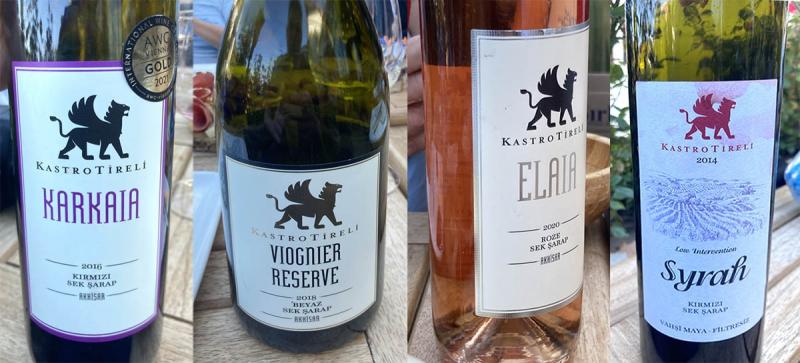
ABOVE: Various Turkish domestic wines are produced at the Hera Wine House, including Katrotirel Elaia, which is made with Mesopatanian grapes and is distinctly orange in colour.
For picturesque views and a dose of more recent history, head to the village of Sirince. Until the end of the Turkish war of independence in 1923, this small town was ethnically Greek. After the conflict, Turkiye and Greece held large-scale population exchanges, uprooting over a million ethnic Greeks from Anatolia and around 400,000 ethnic Turks from Greece.
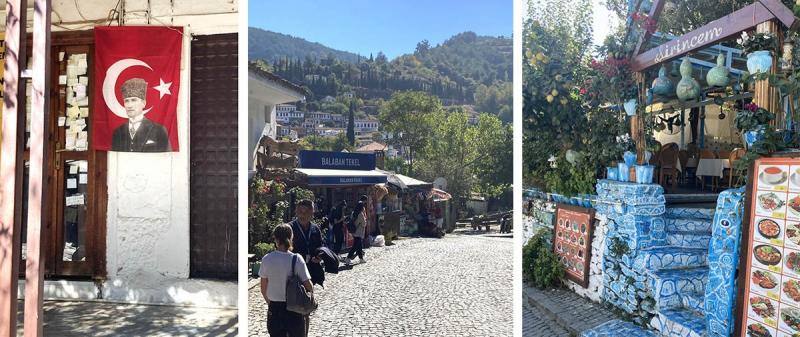
ABOVE: A portrait of the great Turkish statesman Ataturk in Sirince. (RIGHT) The Hellenic influence is seen everywhere in the architecture of Sirince.
While native Turks now live in the area, the town is distinctly Hellenic in appearance, and the street markets, restaurants, and bazaars are gorgeous. Sitting in a cafe and looking out at the hills, you get the vibes of Santorini or Corfu. Make sure to stop by Hera Wine House in the old town. This wine store sells some of Turkiye’s finest wines, and the store staff is very knowledgeable. Of particular interest is wine made from Babylonian grapes that pours orange in colour.
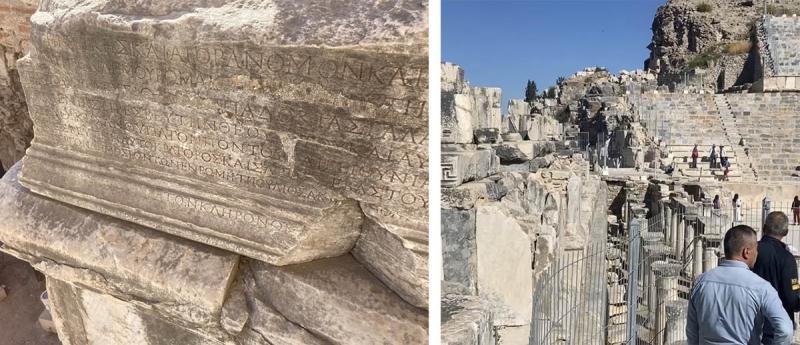
ABOVE: Detail of Greek inscription among the ruins at Ephesus. (RIGHT) The ruins of the Great Theatre of Ephesus, which in its day could hold 24000 spectators.
While Greece or Italy may be considered the penultimate spots to visit historical sites from the classical era, Turkiye leads the pack. The Anatolian peninsula has been inhabited since the dawn of human civilization. It was of utmost importance to the Greeks, Romans, and their Byzantine successors. Kusadasi, Turkiye, is the ideal jumping-off point to access one of Turkiye’s most incredible historical sites. While picturesque Kusadasi, with its Mediterranean coastline and beach town vibes, is a destination in and of itself, the must-see ancient city of Ephesus is only a short journey away.
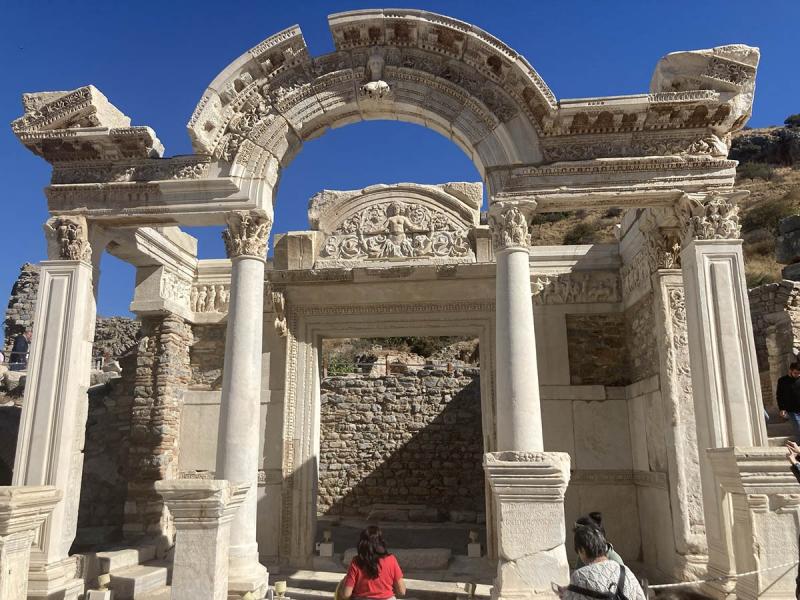
ABOVE: The Temple of Domitian at Ephesus. Emperors only permitted sites to be named after them when a city was extremely important. This Temple’s name reflects Ephesus’s historical importance to Rome.
Ephesus was so well constructed that the Roman-built sewers continue to function. Although hit by fire and earthquakes, the theatre and library also survive. They were excavated, reassembled, and stand proud, almost in defiance of time. Rome’s aesthetic can be seen in the carvings etched into the walls of the Celsus Library, the third-largest library in the Roman Empire. While walking on the marble-tiled streets, it’s easy to miss the chiselled eves in every piece of marble. The city’s architects added this detail to prevent the stones from becoming slippery during the wet weather. While many ruins stand as just that, ruins, Ephesus has the feel of being an actual city.
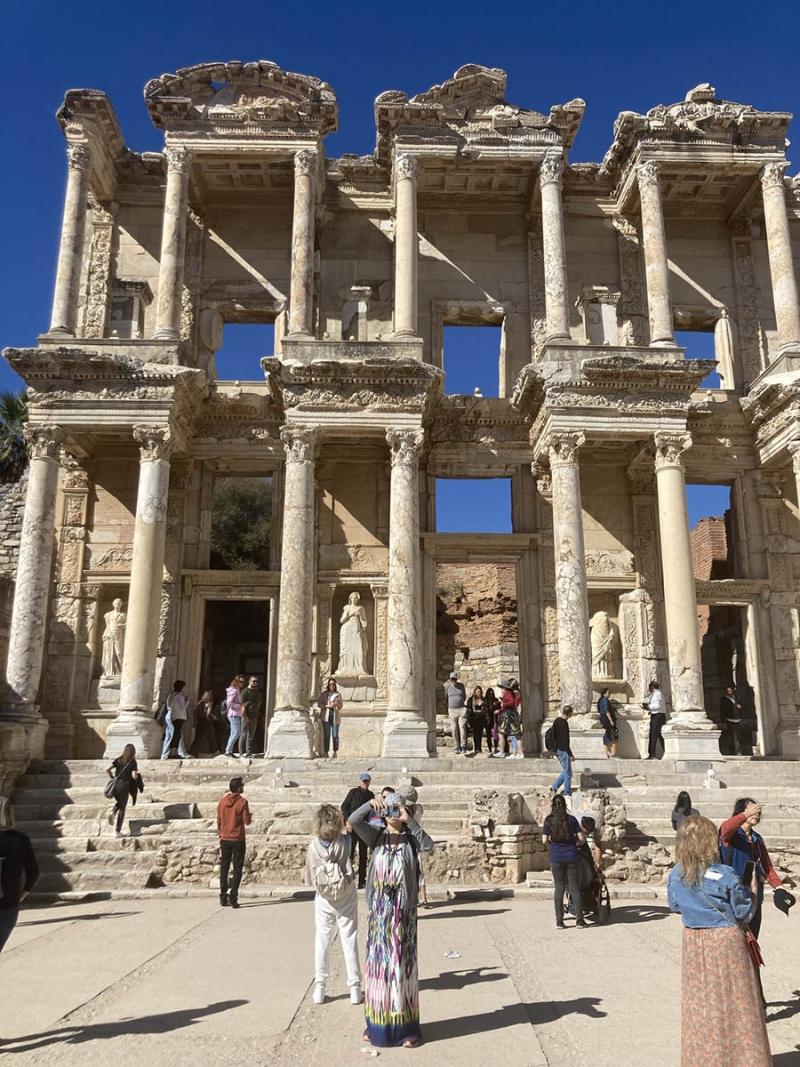
ABOVE: Considered an architectural marvel, the Celsus Library was the third-largest library in the Roman Empire.
Nearby Ephesus is the last standing pillar from the Temple of Artemis, one of the Seven Wonders of the ancient world. Today only one of the pillars remains. Behind it is an amazing cathedral that holds the body of Saint Paul; behind is the Ottoman castle designed by the architect who created the Hagia Sofia in Istanbul. The singular pilar is still an amazing site to behold and makes one wonder how the ancient civilizations managed to build such complex structures.
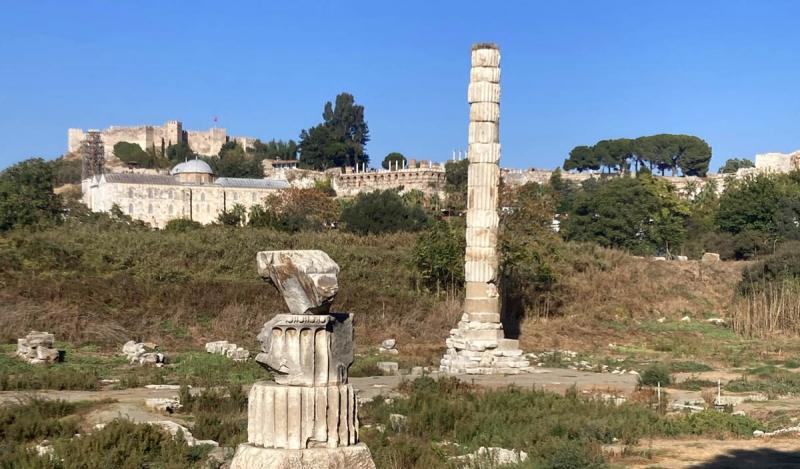
ABOVE: The last stanging pillar from the Temple of Artemis.
For Muslims and Christians, a nearby holy site also provides a place of pilgrimage. About ten minutes down the road, nudged into the mountains, is what is believed to have been the last home of the Virgin Mary. It is thought she was taken there by Saint John after the death of Jesus. Several Popes have visited the home since its discovery, most recently Pope Benedict in 2006.
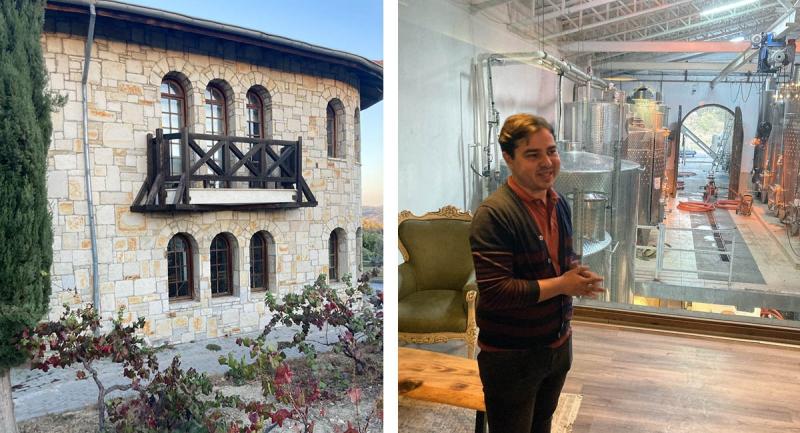
ABOVE: On the outside, the Yedi Beligeler winery looks like a mansion straight from an Italian film. Inside, wine production is visible from the exquisite dining room.
After visiting these historical landmarks, Yedi Beligeler winery and Seven Sages Restaurant is perfect for dinner. The winery produces some of the finest wines we tasted on our trip, which is not a small statement given the fantastic quality of wines all over the region.
Featuring a fantastic atmosphere, the restaurant offers top-quality dishes, including delicious locally caught seafood. The atmosphere of this Italian-like villa is incredible. Emphasizing freshness, you can see the tanks that the wine is produced and stored in from the dining area through a giant glass panel. The winery uses 100 percent Anatolian grapes; they were also the first in Turkiye to produce wine from the Malbec grape variety. Their wines made with local Ankaran grapes are of particular note and worth trying. Reservations are recommended when you visit.
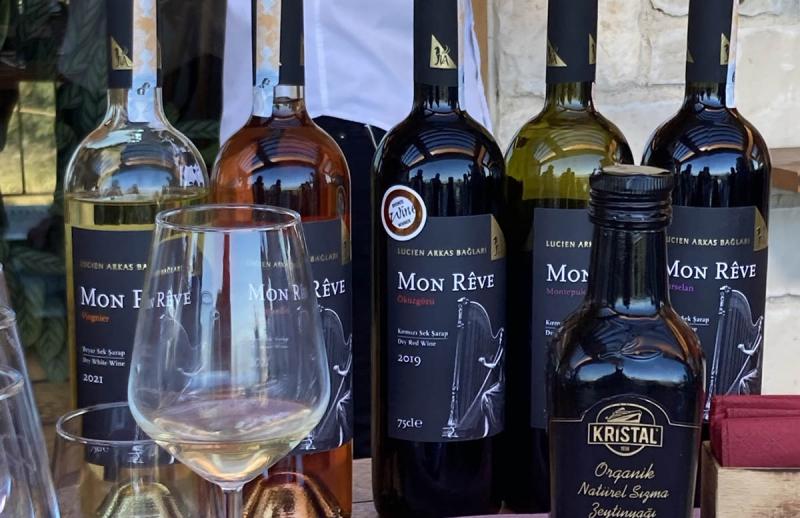
ABOVE: Lucien Arkas wineries is one of Turkiye’s largest wine producers; their restaurant is not to be missed!
As you make your way back towards Izmir, visit Lucien Arkas Baglari’s fantastic restaurant and winery. The company was initially owned by a Greek businessman who worked in the shipping industry, hence the very Hellenic name. Their funky dining room has a glass floor allowing you to look down at the thousands of barrels in the cellar below it – our hosts told us that it ranks 66 out of 900 cellars globally. Outside, the patio at Baglari offers incredible views of the Turkish countryside and nearby mountains. Make sure to try their meatballs, a fantastic traditional Turkish dish that will humble even the heaviest of appetites and tastes incredible. Arkas’s wines are also fantastic in their texture and taste due to the local soil comprised of lime and clay; the minerality helps to grow tasty grapes.
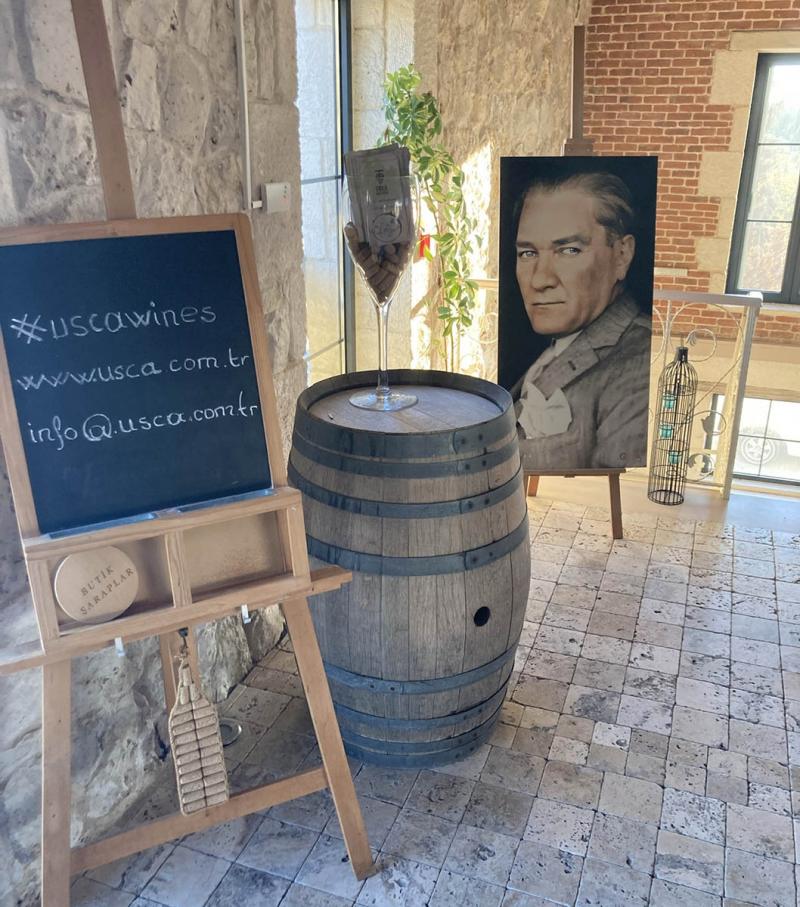
ABOVE: The entrance to USCA winery is adorned with a portrait of Kamal Attaturk. Even in a bohemian swauve location like USCA, expect to see portraits of Turkiye’s first president; he is a beloved figure across the country!
Another hidden surprise, USCA winery was a great spot to end our wine trip on a high note. We sat in the gorgeous courtyard patio frequented by some of the happiest farm dogs anywhere in Turkiye (and Turkiye is known for happy dogs). Sit among the local bohemians and tourists and enjoy a glass of wine while watching the setting sun drop behind the mountains.
Turkiye is emerging as a global viniculture power. From wine connoisseurs to new wine enthusiasts, there is something for everyone in Turkiye’s Anatolian wine-growing region. Whether you visit Turkiye’s wine region directly or as a stopover when you fly home through Istanbul, the area nestled on the Mediterranean at the crossroads of Europe and the Middle East offers stunning history, great wines, and delicious local foods.
Turkiye has been a gastro destination since the Ottoman era, and its food culture spread throughout the world, leaving influences from the Balkans to the Southern Middle East; in the next few decades, its wine will have the same global reach.
Visiting Turkiye is more than just about excellent wines and food; Turkiye’s people are some of the nicest in the world. They are kind and passionate about what they do, making visiting the country worthwhile.
For more information on Turkiye’s wine region, visit goturkiye.website
Photos: Mckenzie Donovan

